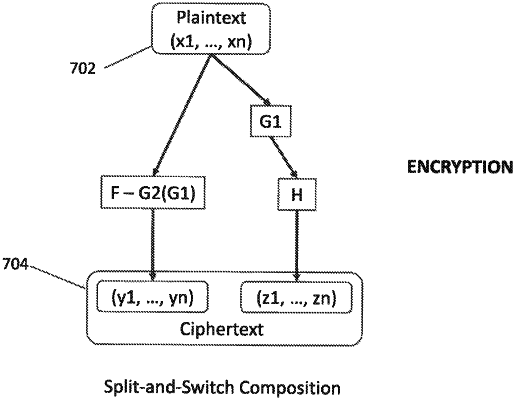| CPC H04L 9/0825 (2013.01) [H04L 9/0625 (2013.01); H04L 9/3073 (2013.01); H04L 9/3093 (2013.01)] | 16 Claims |

|
1. A method, comprising:
receiving a plaintext message to be encrypted as input data into a computer in accordance with protocols of an asymmetric cryptography system;
encrypting the plaintext message, using a processor on the computer and a public key comprising two components, each component presenting a polynomial mapping of degree 4; and
outputting a ciphertext as an encrypted version of the input plaintext message, the ciphertext comprising the two components, each component having at least degree 4; and
executing a split-and-switch mechanism that provides an encryption of the plaintext message received as the input data, including a ciphertext message as an encrypted version of the plaintext,
wherein the ciphertext message derives from a splitting in which the encryption comprises a plurality of components to provide a trapdoor including a random variable, and
wherein each of the two components of the public key comprises coefficients of a polynomial defining a composition of two mapping functions, each mapping function having at least a degree 2,
further comprising a split-and-wise mechanism that provides the encryption of the plaintext message received as the input data by providing the ciphertext message as the encrypted version of the plaintext, wherein the ciphertext message derives from the splitting in which the encryption comprises the plurality of components to provide the trapdoor that defines the split-and-switch mechanism,
wherein the trapdoor includes the two components, comprising at least two random multivariate polynomial maps with one of the at least two random multivariate polynomial maps being hidden.
|